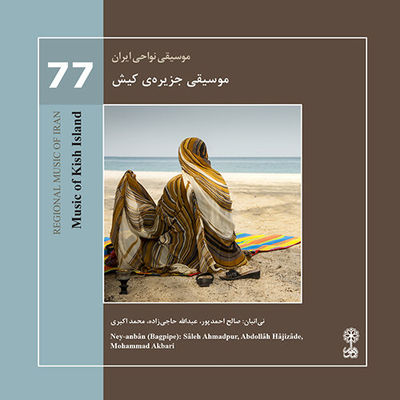The album entitled “Music of Kish Island” is the 77th collection of the regional music of Iran that has been released by the Mahoor Institute of Culture and Arts.
The collection features 19 tracks recorded and performed based on extensive research by Mohsen Sharifian, an expert on the folk music of southern Iran who is also a neyanban virtuoso.
The album features contributions from Saleh Ahmadpur, Abdollah Hajizadeh, Mohammad Akbari, Ahmad Gharib, Foad Ahmadpur, Masud Ahmadpur, Khaled Salehi, Ahmad Khaladeh, Mohammad-Ali Majidi, Khaled Hajizadeh, Reza Gharib, Abdollah Ahmadpur and Hassan Khaldun.
In his notes for the album, Sharifian wrote that songs and music being performed by people during their search for pearls in the sea are the major part of the music of the island.
“At present, most of the songs of the sailors on Kish are in Arabic, their native language, and are mostly in praise of God and the Prophet of Islam (S), and also describe their occupations and destinations,” he said.
He added that search for pearls as an occupation has developed over the years by migration and invasion or under the influence of the peaceful co-existence of various ethnic groups in the island, because many people have done this work over the course of history optionally or under compulsion as a slave.
The songs and music being performed during the Zar traditional ceremony are another part of the music of the island.
The Zar rite, commonplace in southern Iran, is a legacy from slavery as it was performed by African slaves who were brought to southern Iran.
The rite is performed by a man called babazar or a woman known as mamazar to free the body and mind of a person from evil spirits. The musical rite also is comprised of ecstatic dance by workers in a group named ahl-e hava.
People on Kish also have their own special songs and music for wedding ceremonies.
Families prepare a special place decorated with colorful lights and fabrics, and music performers arrive at the place carrying the national flag, which is a symbol of happiness.
The men’s band in each village or neighborhood has a leader named Bab al-Hava, who is highly respected by people, and the women’s band is led by a woman named Umm al-Hava.
Over the past few decades, musical bands on Kish perform during wedding ceremonies without Bab al-Hava or Umm al-Hava, Sharifian lamented and added that the lack of the leaders has remarkably affected the performances at wedding ceremonies.
Lullabies sung by mothers are part of the music of the region. Lullaby is called “tahwid” by the locals. The mothers also sing songs to entertain their children.
During wedding ceremonies, female singers or performers, who are mostly black, traditionally perform only for audiences of women.
Arrangement for each ceremony is also different and musicians use many local instruments in their performances. However, the neyanban, the dammam – the king of the percussion instruments – and the tar, another percussion instrument (not be confused with another Iranian stringed instrument of the same name), are common to all performances.
Sharifian is the leader of the Lian ensemble from the southern Iranian city of Bushehr, which has performed many concerts across the world.
Source:Tehran Times

